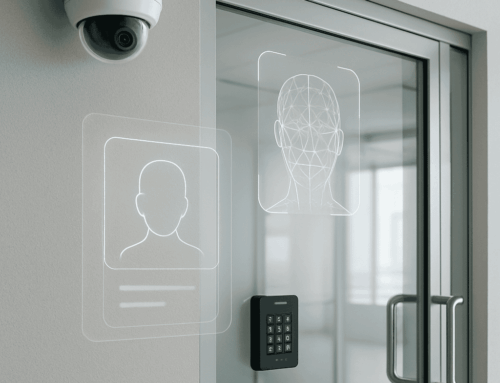What Is Cat 8 Ethernet Cable? [Definition, Cost, and Use Cases]
![cat-8-cable cat 8 cable scaled What Is Cat 8 Ethernet Cable? [Definition, Cost, and Use Cases]](https://iesmartsystems.com/wp-content/uploads/2023/02/cat-8-cable-scaled.jpg)
A Category 8 or Cat 8 Ethernet cable is a high-speed network cable designed to provide the highest data rate of up to 25 Gbps or 40Gbps. Cat8 also transmits at a staggering 2 billion signals per second or 2 GHz. It is the latest IEEE and fastest category of Ethernet cables and is made to support the growing demand for faster internet speeds and more bandwidth-intensive applications.
Strength training without a training program, no muscle growth Space Body Spirit Fitness how much can ronnie coleman bench press weight loss and bodybuilding program.
Constructed with shielded twisted pair (STP) wires, Cat8 cables boast advanced technologies that allow for longer reach and higher frequency transmission. The cables are also smaller in diameter, making them more flexible and not difficult to install.
Not only are these cables fast, but they are also versatile. They utilize RJ45 connectors and are backward compatible, meaning they can work with older devices supporting lower Ethernet cable categories. With its RJ45 ends, it may be used with network equipment such as routers and switches to upgrade to 25G or 40G speeds without buying whole new hardware. However, to unlock their full potential, it’s best to use them with devices really designed for Cat 8 speeds.
Cat8 is best suited for data centers, enterprise networks, high-performance gaming, and home theater systems (although some say they are overkill for home applications). They are the ultimate tool for those who demand the best connectivity and speed. In a nutshell, Cat 8 Ethernet cables are the ultimate connectivity solution for those who require higher performance from their network.
The one catch is that Cat8 has very limited cable lengths; the furthest a single cable may run is 98 feet, which is much less than the 328 feet that the other categories allow.
Cat 8 Ethernet Cable Speed Comparison
Cat 8 Ethernet is the newest addition to the Ethernet family and is a real game-changer and not just because it’s an excellent ethernet cable for gaming. With its lightning-fast speeds of up to 40Gbps, it leaves its predecessor, Cat7, in the dust with its measly 10 Gbps. Not only is it quick, but it also has a more extended reach, boasting a maximum distance of 30 meters.
Cat8 supports a bandwidth of over 2000 Mbps, which is double the frequency supported by Cat7 cables. This means a faster transfer of data and improved performance for applications that require high bandwidth, such as data centers, gaming, and streaming high-definition videos. Plus, it’s backward compatible so that you can use Cat8 with your older equipment without any issues and do not need a complete equipment overhaul.
Cat8 is also built to last. They are shielded with multiple layers to protect against electromagnetic interference (EMI) and alien crosstalk (AXT). This makes them ideal for use in high-density environments where numerous cables are often run in close proximity to one another. In addition, they are made with thicker copper cables and have a higher bend radius, making them durable and resistant to wear and tear.
Overall, Cat 8 Ethernet cables are a step up from the rest with their blistering fast speeds, longer reach, and improved performance. Cat 8 Ethernet cables offer significantly higher speeds and improved performance over previous standards, making them ideal for use in high-bandwidth applications such as data centers, gaming, and 4K/8K video streaming.
Cost Of Running Cat8 Ethernet Cables
Although affordable compared to fiber optic cabling, the price of Cat 8 Ethernet cables can be tricky to pin down, as it depends on various factors, such as the brand of the cable, length, and the location of installation. But on average, you can expect to pay over $1 per foot.
Another cost to consider is the installation process. Running Ethernet cables through an existing building can be more costly than installing them in a new building, as it may require drilling through walls and ceilings. Furthermore, whether you’re hiring a professional or doing it, yourself will also affect the cost.
The environment can also play a role in the cost. For example, if the cables are installed in a harsh industrial setting, they may require extra protection, thus increasing the cost. Similarly, if the cables are installed in an area with a high risk of damage, such as an underground tunnel, the price may be higher due to the need for additional protection.
Lastly, the cost can also be affected by the type of connector or termination used. For example, shielded or unshielded connectors can affect the cost of the cables. Moreover, buying in bulk can result in a lower price per foot.
When it comes to the cost of Cat 8 Ethernet cables, it’s all about weighing the pros and cons and considering your budget. On average, you can expect to pay over $1 per foot for the cable, but keep in mind that installation and other factors can add up. It’s essential to research and shop around to ensure you’re getting the best ethernet cable deal.
Key Differences Of Cat8 Cable
Cat 8 Vs Cat 7
Cat 8 and Cat7 are high-performance Ethernet cables offering faster speeds and improved performance over previous standards. However, some critical differences between the two make Cat 8 the more advanced option.
One of the main differences between Cat 8 and Cat 7 is the speed. Cat8 cables can provide speeds of up to 40 Gbps, while Cat 7 cables are limited to 10 Gbps. This means Cat8 can transfer data much faster than Cat 7 cables.
Another major difference between the two is the frequency they support. Cat8 can handle frequencies up to 2000 MHz, while Cat 7 cables are capped at 600-1000 MHz. This means Cat8 can transfer data faster and with less interference.
The shielding on Cat8 is also more advanced than Cat 7 cables. They are designed with multiple layers of shielding to protect against electromagnetic interference (EMI) and alien crosstalk (AXT), making them more reliable and stable for use in high-density environments such as data centers.
Cat8 is more durable and resistant to wear and tear than Cat 7 cables. They are made with thicker copper conductors, which helps to prevent damage to the cable over time.
Cat 8 Ethernet cables are faster and more advanced than Cat 7 cables, making them better suited for high-bandwidth applications and high-density environments. They also offer improved shielding, durability, and less interference.
Cat 8 Vs Cat6 A
Cat 6 A is designed for 10 gigabit ethernet and above. Cat8 cables are four times faster (40 Gbps) than Cat6A cables which are limited to 10 Gbps. Cat8 ethernet cables support bandwidth up to 2 GHz and frequencies up to 2000 MHz, while Cat 6A cables are limited to 500 MHz. Again, Cat8 is more durable and resistant to wear and tear than Cat6A cables.
Uses Of Cat 8
Data Centers And Server Rooms
One of the primary uses of Cat8 in data centers and server rooms is switch to switch communications and for interconnects between servers and switches. With speeds of up to 40 Gbps, Cat8 cables can transfer large amounts of data quickly and efficiently, making them ideal for use in high-performance computing environments. This also helps to reduce network congestion and improve overall network performance.
Power over Ethernet (PoE) is a technique that allows data and power to be sent over the same Cat8 connection. Cat8 cable may save space in congested data centers by decreasing or doing away with the requirement for power cables, and it can also make edge computing deployments easier. Power over Ethernet (PoE) devices, such as wireless access points and security cameras, may be powered from a distance using a Cat8 cable.
Another use of Cat8 in data centers and server rooms is for storage area networks (SANs) and network-attached storage (NAS). These types of networks require higher data transmission, and Cat8 can provide the necessary bandwidth to support the high-performance storage devices used in these environments.
Cat8 is also used in data centers and server rooms for connecting servers and switches to top-of-rack (ToR) switches and other network devices. With their ability to support frequencies up to 2000 MHz, Cat8 can provide faster data transfer and improved performance for these types of connections.
In summary, Cat 8 Ethernet cables are ideal and cost-effective for use in data centers and server rooms due to their high-speed and high-performance capabilities. They are perfect for interconnects between servers and switches, storage area networks, and connecting servers and switches to top-of-rack switches and other network devices. They also offer improved shielding and durability, which makes them perfect for high-density environments.
Security Systems
When it comes to securing our business and home networks, technology plays a crucial role. One of the critical components of modern security systems is the Cat8, the latest and fastest ethernet cable. This robust cable can transmit high-speed data, making it an ideal solution for various security applications.
To see how Cat8 works, imagine an extensive surveillance system with dozens of cameras. Each camera needs to send high-definition video footage to a central hub, where it is recorded and monitored. The cameras need to be connected to the hub using a Cat8 cable to ensure that the footage is clear and detailed and streams smoothly without interruption. This powerful cable can handle the high-bandwidth demands of video surveillance, making it the perfect choice for this application.
But the Cat8 isn’t just for video surveillance. It’s also ideal for connecting access control devices like card readers and biometric scanners. These devices require a high-speed connection to a central system to process data in real time, and Cat 8 cable can provide the necessary bandwidth for this purpose.
Cat8 is also used in security systems to connect alarm and intrusion detection devices. These devices need a stable and fast connection to a central monitoring system to send real-time alerts and notifications in case of an emergency.
With its high-speed data transfer capabilities, high-frequency and high-bandwidth applications, and ability to transmit data over long distances, it is the perfect choice for keeping businesses safe and secure.
About i.e.Smart Systems
i.e.Smart Systems is a Houston, TX based technology integration partner that specializes in design and installation of audio/visual technology and structured cabling. For more than three decades, our team of in-house experts has partnered with business owners, architectural firms, general contractors, construction managers, real estate developers, and designers in the Houston market, to deliver reliable, scalable solutions that align with their unique goals.




